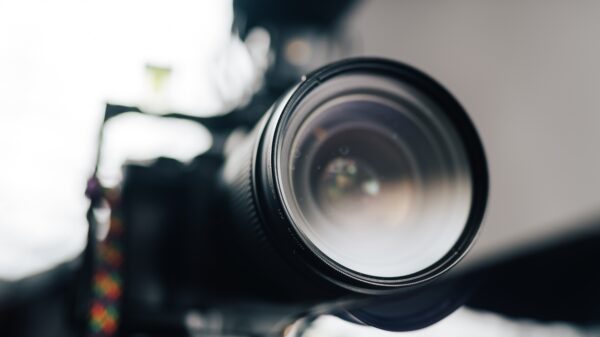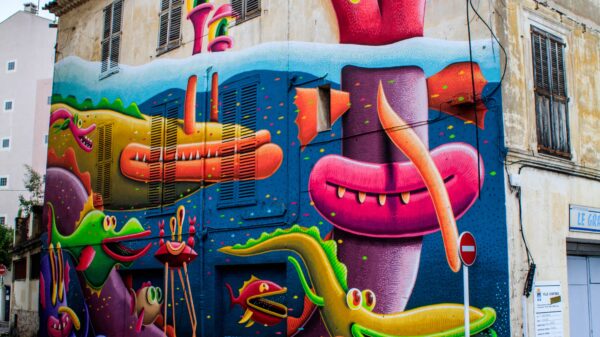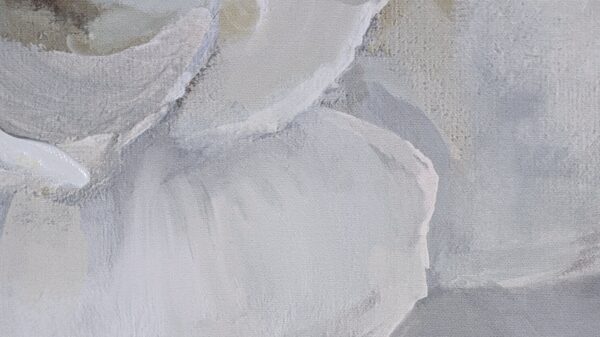
Are you ready to embark on a journey into the captivating realm of digital art? From mesmerizing animations that bring imagination to life, to exquisite illustrations that evoke emotions in an instant, the world of digital art is brimming with endless possibilities. In this blog post, we will unveil the seven types of digital art that every enthusiast should know about. So fasten your seatbelts and prepare to be amazed as we delve into a vibrant universe where creativity knows no bounds!
Introduction to Digital Art and its Types
Digital art is becoming increasingly popular as technology advances. There are now many different types of digital art, each with its own unique characteristics. In this blog article, we will introduce you to some of the most popular types of digital art.
1. Vector Art: Vector art is created using software that allows artists to create images that can be scaled up or down without losing quality. This type of art is often used for logos and illustrations.
2. Raster Art: Raster art is created using pixels, which are small dots of color. This type of art is often used for photos and web graphics.
3. 3D Art: 3D art is created using special software that allows artists to create images with depth and dimension. This type of art is often used for product design and architectural visualization.
4. Motion Graphics: Motion graphics are animated graphics that are often used in video and film productions. This type of art combines elements of graphic design, animation, and video production.
5. Interactive Art: Interactive art is created using software that allows viewers to interact with the artwork itself. This type of art is often used for websites and games
What are the Types of Digital Art?
Digital art is becoming increasingly popular as more and more artists are using digital tools to create their work. There are a variety of different types of digital art, each with its own unique characteristics.

1. Photo Manipulation
Photo manipulation is the process of using digital tools to alter photographs. This can include anything from simple edits like cropping and color correction to more complex changes like combining multiple images or adding special effects.
2. Vector Graphics
Vector graphics are computer-generated images that are created using mathematical algorithms. These images can be scaled up or down without losing any quality, making them ideal for use in logos, illustrations, and infographics.
3. Raster Graphics
Raster graphics are made up of pixels, which are small squares of color information. When viewed from a distance, these pixels blend together to form an image. Raster graphics are commonly used in photography and web design.
4. 3D Modeling
3D modeling is the process of creating three-dimensional objects on a computer. Artists can use 3D modeling software to create anything from simple shapes to complex sculptures. 3D models can be used for both practical purposes (such as product design) and artistic expression.
5. Motion Graphics
Motion graphics are digital animations that incorporate text, shapes, and/or images. They can be used for a variety of purposes, such as advertisements, title sequences, and educational videos. Motion graphics often make use of visual effects
– 2D Animation
2D animation is a digital art form that involves the creation of two-dimensional images, usually through the use of software. 2D animation can be used for a variety of purposes, including creating illustrations, adding special effects to videos or movies, and creating interactive games.
2D animation often relies on the use of vector graphics, which are images that are created using mathematical equations instead of pixels. This allows 2D images to be scaled up or down without losing any quality. 2D animations can also be created using bitmap graphics, which are made up of individual pixels.
2D animations can be created in a number of different ways, including frame-by-frame animation and tweening. Frame-by-frame animation involves creating each frame of the animation individually, while tweening involves creating keyframes and then letting the software interpolate the frames in between.
2D animations can be exported as video files, image sequences, or Flash files. They can also be used as assets in Unity or Unreal Engine projects.
– 3D Animation
3D animation is the process of creating three-dimensional moving images in a digital environment. This type of animation can be used for a variety of purposes, including video games, movies, television shows, and more. 3D animation involves the creation of models, lighting, and other effects to make the images come to life.
There are a few different types of 3D animation that you should know about. The first is cel-shaded animation, which is created by drawing each frame by hand and then scanning it into a computer. This type of animation has a unique look that can be quite striking. It is often used in video games and cartoons.
The second type of 3D animation is polygon-based animation. This type of animation uses 3D models that are made up of polygons. These models are then rigged with bones and joints so that they can be moved around in a scene. Polygon-based animation is often used in movies and TV shows.
There is particle-based animation. This type of animation uses small particles to create the illusion of movement. Particle-based animations can be used for things like explosions or fire. They can also be used to create more subtle effects like rain or snow.
– Vector Graphics
When we talk about digital art, vector graphics are one of the first things that come to mind. Vector graphics are created using mathematical algorithms, which makes them scalable and resolution-independent. This means that they can be enlarged or reduced without losing quality.
Vector graphics are often used for logos, illustrations, and infographics. They can be created in programs like Adobe Illustrator or Inkscape.
Some of the most popular vector graphic artists include Lisa Glanz, Olly Moss, and Rob Sheridan.
– Motion Graphics
Motion graphics are digital animations that are used to create visual effects or motion sequences. These animations can be used for a variety of purposes, including advertising, web design, and gaming. Motion graphics can be created using a number of different software programs, such as Adobe After Effects, Cinema 4D, and Blender.
There are a few things to keep in mind when creating motion graphics. First, you need to decide what type of animation you want to create. There are two main types of motion graphics: 2D and 3D. 2D animations are typically simpler and can be created using less sophisticated software programs. 3D animations are more complex and require more powerful software programs to create.
Once you have decided on the type of animation you want to create, you need to consider the purpose of the animation. What are you trying to achieve with the animation? Are you trying to sell a product? Are you trying to create an engaging website? Are you trying to make a video game? The purpose of the animation will dictate the type of software you use as well as the design of the animation itself.
You need to think about how long the animation should be. Motion graphics can range from a few seconds to several minutes in length. The length of the animation will be determined by its purpose – shorter animations are typically better for advertisements while longer animations may be necessary for explainer videos or video games.
– Digital Painting and Drawing
Digital painting and drawing is a type of digital art that uses software to simulate the appearance and behavior of traditional media associated with painting and drawing. The term can also refer to the result of this process.
Traditional painting and drawing techniques often require time-consuming set-up, clean-up, and material preparation processes. For example, mixing paints, preparing a canvas, or stretching a paper can take up significant time before an artist can even begin creating their work. In contrast, digital painting and drawing eliminates many of these initial steps by allowing artists to quickly select colors, brushes, and other tools with a few clicks of a mouse or stylus.
Additionally, traditional paintings and drawings are static images; once an artist completes their work it cannot be easily changed without starting from scratch. However, because digital paintings and drawings are created on computers, they can be saved as project files that can be edited at any time. This means that artists can make changes to their work even after it’s “finished”, which gives them much more flexibility when it comes to making revisions or trying out new ideas.
– Image Manipulation
Digital art is constantly evolving, with new software and techniques emerging all the time. However, there are some key types of digital art that have remained popular over the years. In this blog post, we will explore the diverse world of digital art, unveiling the types you should know.
1. Image Manipulation
Image manipulation is one of the most popular types of digital art. It involves manipulating images to create a desired effect. This can be done using a variety of software programs, such as Photoshop or GIMP.
There are endless possibilities when it comes to image manipulation. Artists can create realistic or surrealistic images, depending on their vision. Many artists use image manipulation to create powerful and thought-provoking pieces of art.
2. 3D Art
3D art is another popular type of digital art. It uses special software to create three-dimensional images and animations. 3D artists often use computer-aided design (CAD) programs to create their artwork.
3D art can be used for a variety of purposes, including product design, architectural visualization, and video game development. Many artists enjoy exploring the creative possibilities that 3D art provides.
Motion Graphics
– Photo Editing
In the world of digital art, photo editing is one of the most popular and widely used techniques. Photo editing can be used to create a wide variety of effects, from simple enhancements to complex compositions.
There are many different software programs that can be used for photo editing, each with its own set of features and capabilities. Some of the most popular photo editing software programs include Adobe Photoshop, GIMP, and PaintShop Pro.
When it comes to photo editing, there are endless possibilities. Some common effects that can be achieved with photo editing include cropping, resizing, adding text or graphics, changing colors, and applying filters or special effects.
Benefits of Using Digital Art
Digital art has come a long way since its early beginnings in the 1960s. It is now possible to create incredibly realistic and lifelike images using nothing more than a computer and some software. This has led to a whole new world of opportunities for artists, who can now create art that could never have been created before.
There are many benefits to using digital art, including the ability to create perfect replicas of real-life objects, the ability to create unlimited copies of an image, and the ability to make changes to an image without starting from scratch. Digital art also offers the opportunity to create completely unique and original pieces of art that can be shared with others online.
Tools Used in Digital Art Creation
When it comes to digital art creation, there is a wide array of tools that can be used. From simple drawing programs to more complex 3D modeling software, the options are nearly endless. Below, we will take a look at some of the most popular tools used in digital art creation.
One of the most basic and commonly used tools for digital art creation is a drawing program like Adobe Photoshop or GIMP. These programs provide a blank canvas where artists can use a mouse or tablet to draw whatever they imagine. Photoshop is especially popular among graphic designers and illustrators, while GIMP is a great option for those who are just getting started with digital art.
For those looking to create more complex artwork, 3D modeling software may be the way to go. Programs like Maya and Blender allow artists to create detailed 3D models and animations. These programs can be used for everything from creating video game characters to designing intricate buildings and landscapes.
No matter what type of digital art you want to create, there is sure to be a tool out there that can help you do it. So get creative and explore the diverse world of digital art!
Examples of Famous Digital Artists and Their Works-Using various Types
There are many digital artists who have made a name for themselves in the art world. Here are some examples of famous digital artists and their works:
1. Robert Rauschenberg: One of the earliest adopters of digital technology in the art world, Rauschenberg is best known for his “combines” – paintings that incorporate both traditional and found objects. In his later years, he began using computers to create digital collages.
2. David Hockney: Hockney is a British painter who is best known for his use of color and light. He has also experimented with digital art, creating photo-realistic images by combining hundreds of individual photographs.
3. Yoko Ono: Ono is a Japanese artist known for her conceptual and performance-based works. In recent years, she has begun creating digital artworks that make use of new technologies such as augmented reality.
4. Olafur Eliasson: Eliasson is a Danish-Icelandic artist whose work often involves light and movement. He has used computers to create immersive installations that allow viewers to interact with them in real time.
5. Takashi Murakami: Murakami is a Japanese pop artist who often uses bright, colorful imagery inspired by manga and anime. He has also created several 3D animations using CGI technology.
Conclusion-Types of Digital Art
Digital art opens up a world of possibilities and creative outlets for artists to explore. From 3D art to vector graphics, there are many different types of digital art out there that can be used to create unique pieces. We hope this article has helped you gain a better understanding of the various types and the tools needed to create them. So don’t hesitate – start exploring the exciting world of digital art today!







